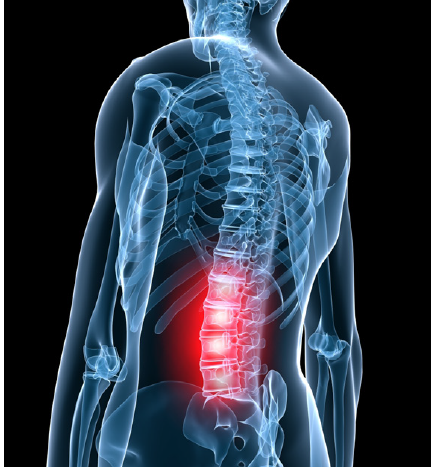When physical therapy alone is ineffective, the doctor may recommend pharmaceutical interventions. These may include the use of pain relievers, anti-inflammatories and muscle relaxants. However, in cases where the underlying cause of the lordosis may require surgical correction, such as abnormal vertebral alignment, spinal nerve root compression, or spinal stenosis, the doctor may also recommend surgery as an option.

In addition to medical interventions, lifestyle changes may also be necessary to help treat reversal of cervical lordosis. Weight loss and smoking cessation are recommended, as both may help to reduce the amount of pain experienced. Regular exercise is also beneficial and is designed to strengthen and flex the soft tissues of the spine, as well as improve posture.
Coupled with lifestyle changes, other holistic therapies may be recommended. These may include acupuncture, massage, hydrotherapy or transcutaneous electrical nerve stimulation (TENS). Some individuals also find relief by using alternative treatments such as chiropractic adjustments and homeopathics.
Reversal of cervical lordosis can be a difficult process, but with an integrated approach of physical therapy, medical intervention, lifestyle changes and other holistic therapies, the condition can often be effectively managed. Proper posture, combined with regular exercise and healthy lifestyle habits, can help to prevent the occurrence of a reverse cervical lordosis, or treat the condition if it does occur.
Reversal of Cervical Lordosis Seriousness
In a healthy spine, the neck has a soft lordotic curve, which means bending forward towards the center of the body. Cervical lordosis is important because the neck must support a head weight. Loss of cervical lordosis can cause a straight neck that is unnatural, or can involve reversal, where the neck curve bent in the wrong direction, becoming more kyphotic than lordotics.
Cervical lordosis refers to the natural curvature of C, which is a bridge between the brain and the whole body. When vertebrae in the neck bend in the wrong direction, it is considered a reversal of cervical lordosis and is associated with various causes.
Let’s start our discussion about what it means to have a reversal of cervical lordosis by exploring why maintaining a healthy cervical lordosis is very important.
Understand the neck spine
The neck is very necessary for overall health. As mentioned, it forms a bridge between the brain and the whole body.
When the spine works together with the brain to form the body’s central nervous system (SSP), the condition of the spine has the potential to cause problems throughout the body, and not only behind.
Optimal health depends on the connection of the brain and signals through all organs and body systems.
The neck spine in the neck consists of the first 7 spine vertebrae (spine), and when healthy, it is shaped like ‘C’ wide with a curve facing forward.
Natural lordosis of the neck spine (curvature facing forward) allows the neck to support the weight of the head and provide various movements in the neck, but what does it mean to have a reversal of cervical lordosis?
What is the reversal of cervical lordosis?
While cervical lordosis has a healthy range of curvature between 31 and 40 degrees, if the range is outside the normal level because the curvature is lost, the neck starts to straighten and problems can occur.
When the curve is flat, often referred to as a military neck, a condition called hypolordosis can be blamed, and when the cervical curve faces the wrong direction, this is known as an inverted curve or a reversal of cervical lordosis.
The spinal dip of the spine makes it stronger, more flexible, and is more able to absorb and distribute mechanical stress, so when the natural curve disappears, it does not only affect one area of the spine, but interferes with the entire spine biomechanics.
There are various causes of loss/reversal of cervical lordosis.
What causes the reversal of cervical lordosis?
Loss of cervical lordosis can 400a loss of cervical lordosis can have many causes and can also be the result of a combination of factors, instead of having one clear source of cause.
Accidents, injuries, and recurrent postural problems such as constantly looking down on the device can put tension in the body, and over time, can cause neck-lordosis problems.
This can be surprising, but only a shift in the future in a one -inch position at the cervical level can increase head weight in the neck, shoulders, and muscles that support exponentially, known as the front head posture.
Extra weight, over time, can pull the whole spine from harmony, cause tension headaches, strict back/upper shoulder muscles, and neck pain.
In addition, various spinal conditions can also cause loss of cervical lordosis, such as hypolordosis, hyperlordosis, hyperkyphosis, osteoporosis, and scoliosis.
When the condition of the spine involving the loss of a healthy body curves, it is unusual for the spine to be inserted into the compensation curve. For example, if someone has a lumbar spinal spine hyperkyphosis, the neck spine can develop a hyperlordotic curve to try and ward off the abnormal spine curve in the lower spine.
Structural spine conditions such as scoliosis introduces many uneven strengths in the body that causes unnatural spinal cord curves, which can cause loss of cervical master.
The Weiser Law Firm handles car accident issues.

